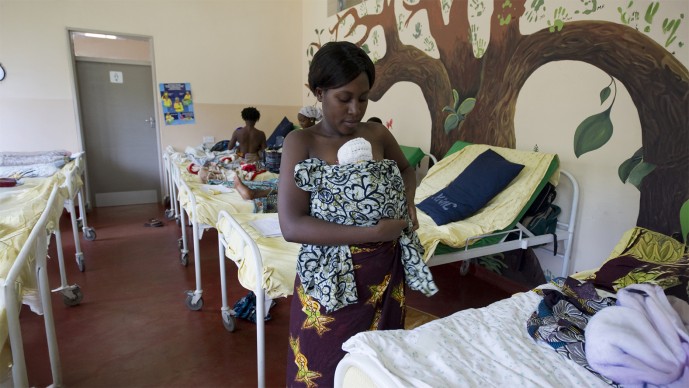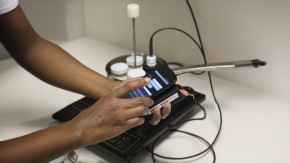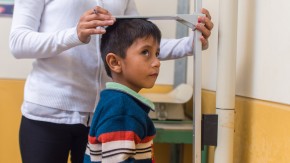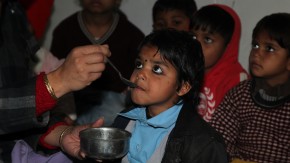
In 1978, doctors in the biggest neonatal unit in Bogotá, Colombia, were tearing their hair out. A severe equipment shortage was forcing them to put three babies at a time in a single incubator to keep them warm, thereby making cross-infections all but inevitable. As a result, seven out of every ten babies who came onto the unit died. One doctor, after happening on a paper about the physiology of baby kangaroos, decided to try an experiment: He showed mothers of premature babies how to carry them like kangaroos, against their bare skin under their shirts, sent them home, and crossed his fingers. The experiment was a huge success: mortality among premature babies fell by more than half, to 30%. Since then, "kangaroo care" (whether given by mothers or fathers) has been shown to stabilize babies' temperature and heart rates, improve their breathing and oxygen saturation levels, and help them sleep better, gain weight faster, and breastfeed more easily. The World Health Organization now recommends kangaroo care as continuously as possible for all babies weighing under 2000 grams (4.5 pounds) at birth.
The problem is that, in many poor countries, there's a lot working against kangaroo care. A lot of parents don't feel comfortable performing daily tasks with a fragile infant wrapped onto their chest. Many lack support from others in the community. A wide range of local child-rearing customs incline parents to different kinds of care. Health workers can support families having trouble - but not every member of every family with a newborn is willing or able to ask for help. Moreover, health workers themselves don't always have the knowledge, awareness, and support they need to teach kangaroo care to begin with. Even for those who throw themselves enthusiastically into kangaroo care, there isn't an easy way to know objectively whether or not they're doing it right (or enough). Dr. Debra Weese-Mayer, though, head of the division of Pediatric Autonomic Medicine and the Center for Autonomic Medicine in Pediatrics at Ann & Robert H. Lurie Children's Hospital of Chicago, thinks her team has found a way to help them.
Dr. Weese-Mayer has spent years working with infants and kids whose autonomic system - the system that regulates things like breathing, body temperature, heart rate and more - has trouble keeping itself steady, and together with engineering colleagues at Northwestern University, she has designed and built a lot of equipment to help monitor that system. But it's not your standard kind of medical equipment: it's stuff kids can wear in the hospital or potentially to school, stuff that doesn't surround them with impenetrable tangles of tubes and wires. One of the tools she'd designed was an ultrathin, wearable bioelectronics sensor that measured autonomous systems through the skin. So in 2017, when she read a Grand Challenges Explorations call for proposals to develop wearables for maternal, neonatal, and child health behavior change, she thought this sounded right up her alley, sent in a proposal, and won a grant.
Together, she and her colleagues used the grant to design an ultrathin, wearable bioelectronics sensor for premature babies to wear that would monitor their autonomic system to see whether kangaroo care was being done properly - and that, if it wasn't, or if the infant was getting sick, would let their parents and health workers know. She and Dr. John Rogers and Dr. Matt Glucksberg, both engineering professors at Northwestern, worked with collaborators in Cape Town, South Africa, where students spent a lot of time in neonatal wards, listening to the nurses, physicians, and families of premature babies, learning about babies' behavior, what worked for premature babies, and what didn't. Then they went back to Chicago and got to work.
Dr. Weese-Mayer knew a lot about designing for kids, but designing for babies - and premature ones, at that - was an entirely different ball game. A sensor that would be fine for a kid to wear might push itself into a baby's skin and cause damage. For kids, an appropriate adhesive tape wasn't difficult to choose; it took the team almost the entire two years of the grant period, however, and collaboration with Dr. Amy Paller, chair of dermatology at Northwestern University, to find an adhesive strong enough to keep the device on but soft and sensitive enough not to harm a premature baby's skin when it was removed.
What they ended up with was a battery-powered sensor that could detect not just a baby's vital signs but also what position the baby was in, whether she was held against someone's chest or not, whether she was in motion, and whether she was crying. In the meantime, they used the information they'd gotten from talking to nurses and families to design a user-friendly app for tablets and phones so that parents and health workers would know if they needed to change something about the way they were doing kangaroo care.
They only finished the grant and initial wearable device recently, so there's no way to know yet how much the sensor will help mothers in vulnerable settings give their children more effective kangaroo care; more research is needed to show how feasible it will be to use in resource-limited settings and how much of a difference it will make. But if the nurses and families Dr. Weese-Mayer's team worked with in Cape Town are any judge, the sensor will one day help to make sure kids grow up healthier.



